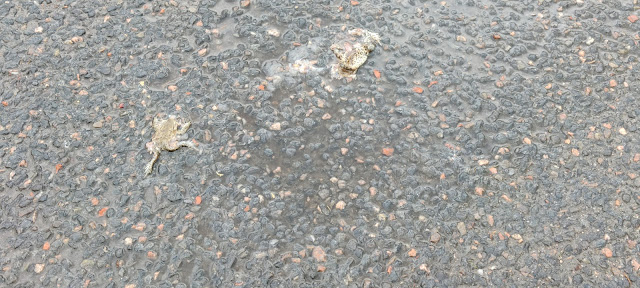There is still no frog spawn in my pond, though there was at this time in previous years, so I thought I would check out Loch Imrich and the marshy spot up Glen Banchor where there is usually lots of spawn. None seen at all...
Going through the car park opposite the Balavil Hotel, I spotted some red catkins on the ground. They were rather like floppy caterpillars, and had some very sticky leaf buds at the end which had a strong smell. They smelled slightly sweet yet also a bit unpleasant.
.jpg) |
| Catkins and sticky leaves |
 |
| Western Balsam Poplar |
The Larch also produces red growths, but this time it is the female flowers that have the flashy ruby colour, and when pollinated will produce the cones.
 |
| Female Larch flower |
The red colour does not last, but is easy to spot before the leaves come out. The Larch is one of the few cone bearing trees that lose their leaves in the winter. The leaf buds in the spring look like little green shaving brushes.
The photo above shows the female flowers having lost their red colour and starting to resemble the cones they will become. The male flowers are underneath.
 |
| This twig has last year's cones at the top |
The centre of the catkin goes down the middle of the photo and sticking out at right angles on each side is a green-yellow plate or platform. The red bundles are supsended below the platform on tiny white stalks.
Each of the red bundles (probably the correct term is anthers) then splits and releases its pollen, seen as yellow grains. There is a lot of it, as even from my sample there was a little heap of yellow powder around the catkin. Why so much? Well, this tree relies on the wind, rather than insects, to carry the pollen grains far and wide in the hope of landing upon a female flower of the same species. Unfortunately, this pollen may be doomed as there are no female Western Balsam Poplar trees anywhere in Newtonmore. Indeed, the nearest trees are recorded in Kincraig and I don't know whether they are male or female. I did go and have a look but they are still bare.















